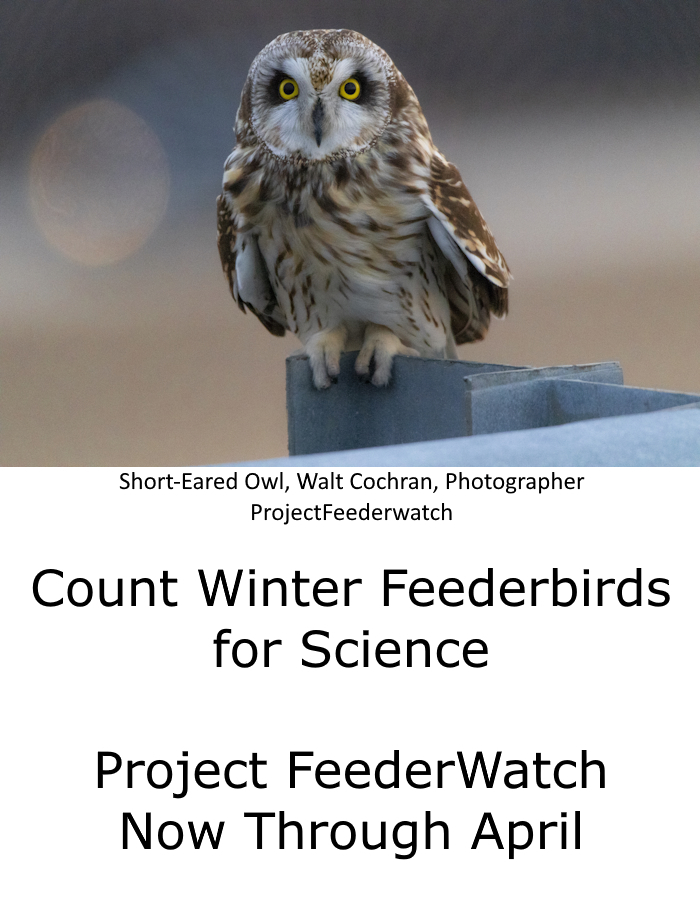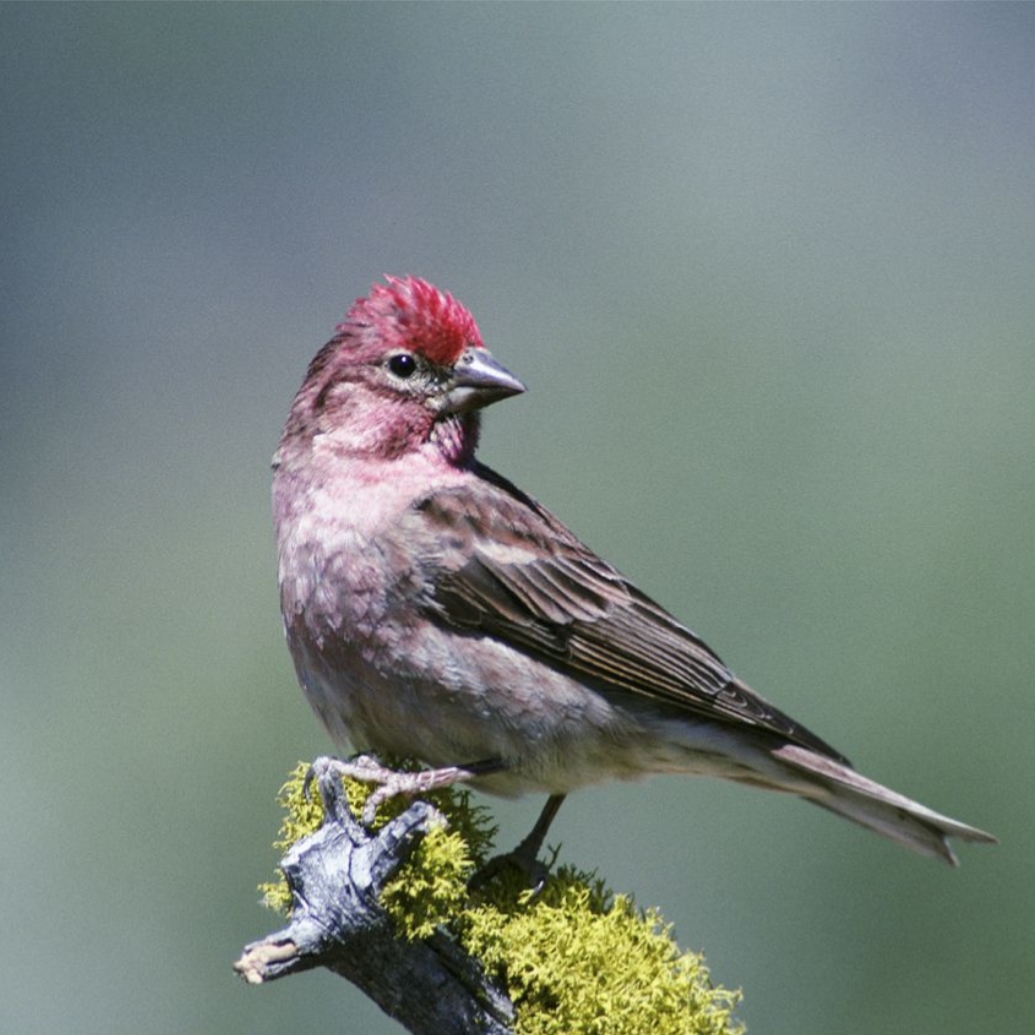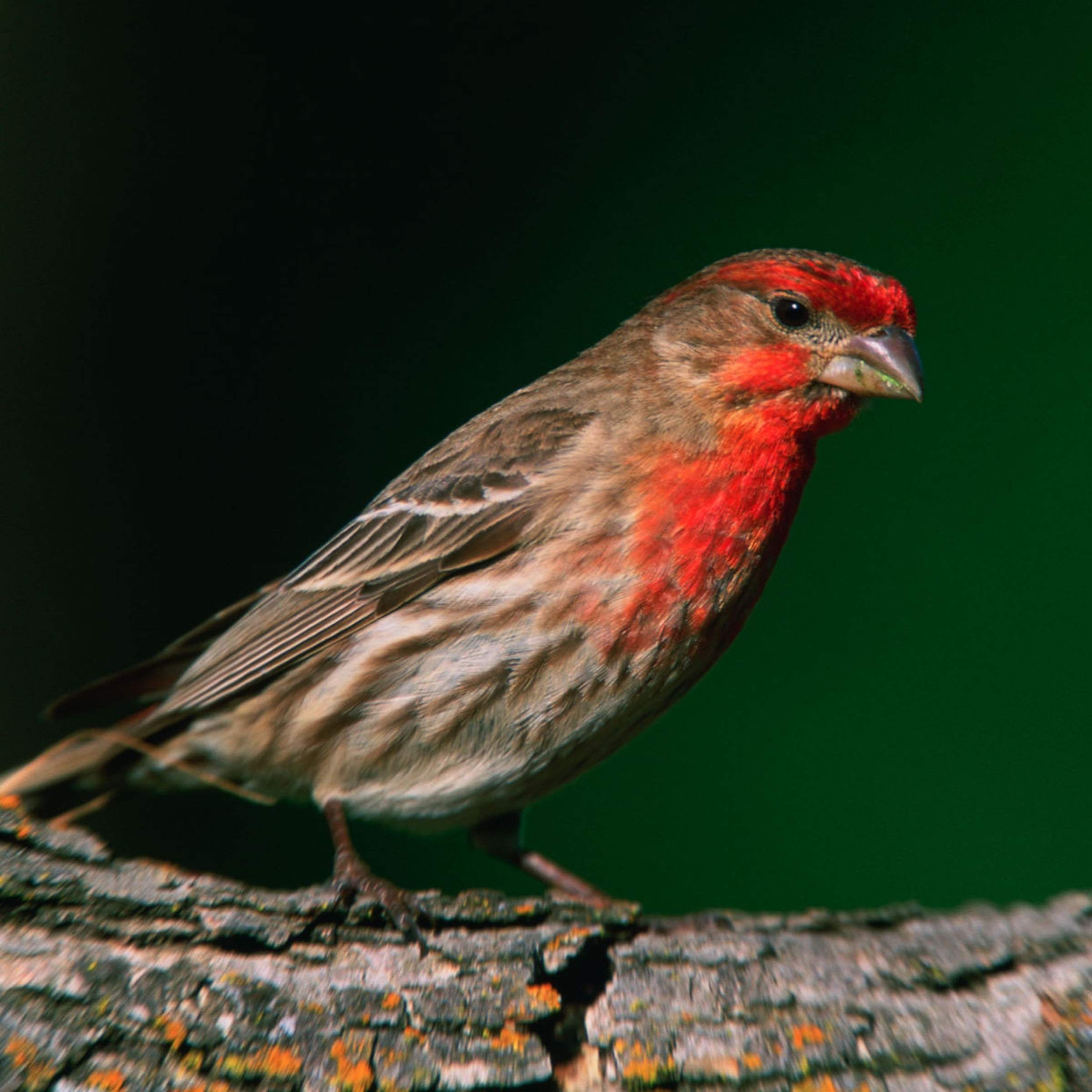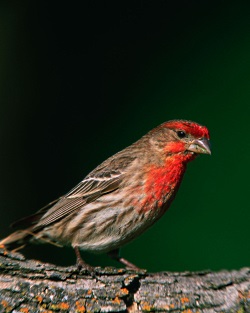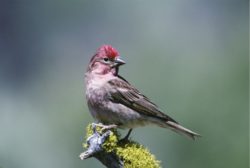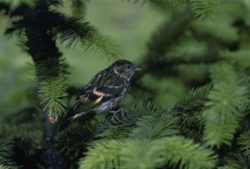
Courtesy & Copyright Hilary Shughart
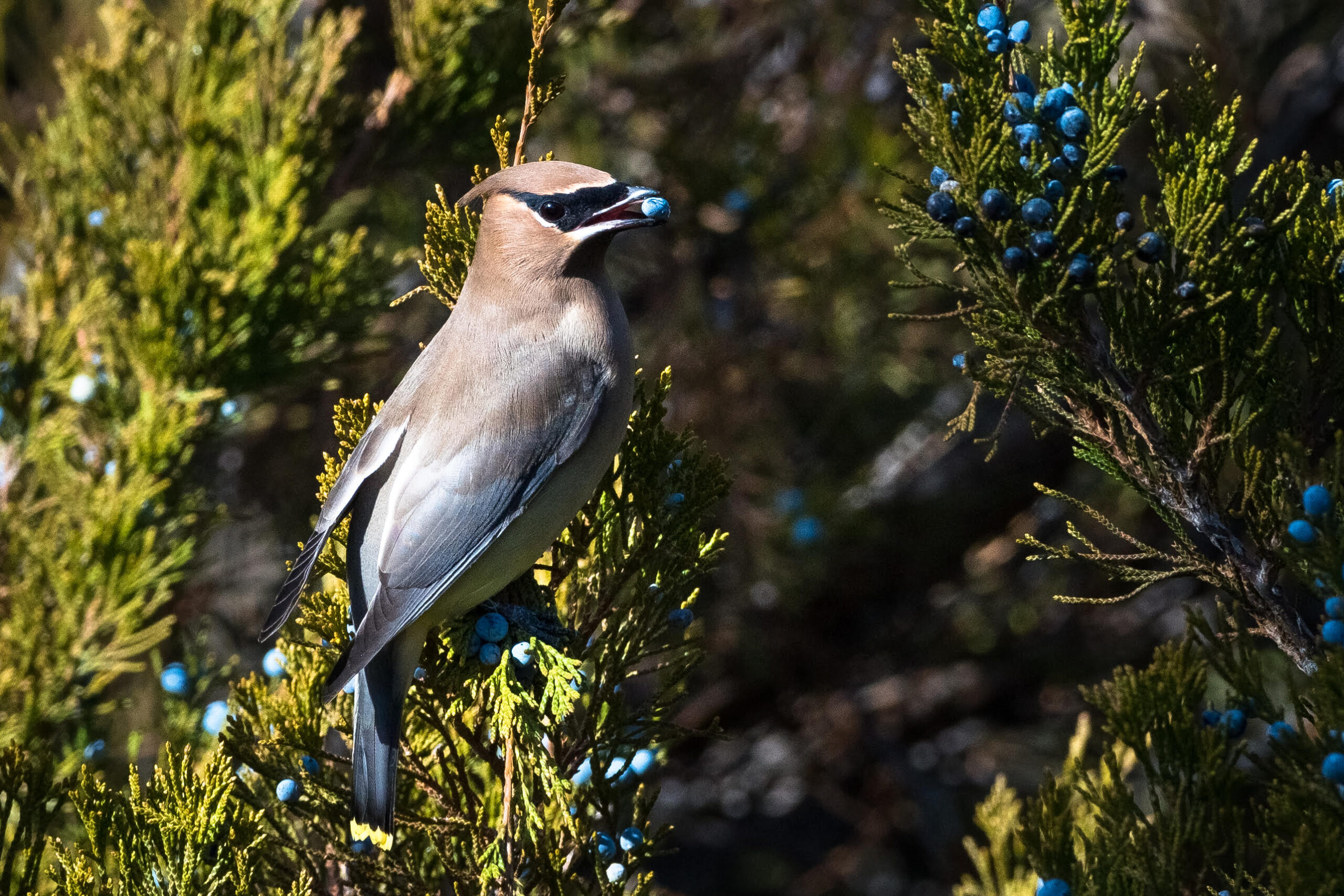 Cedar Waxwing eating Juniper Berry
Cedar Waxwing eating Juniper Berry
Courtesy & Copyright Jimmie Grutzmacher, Photographer
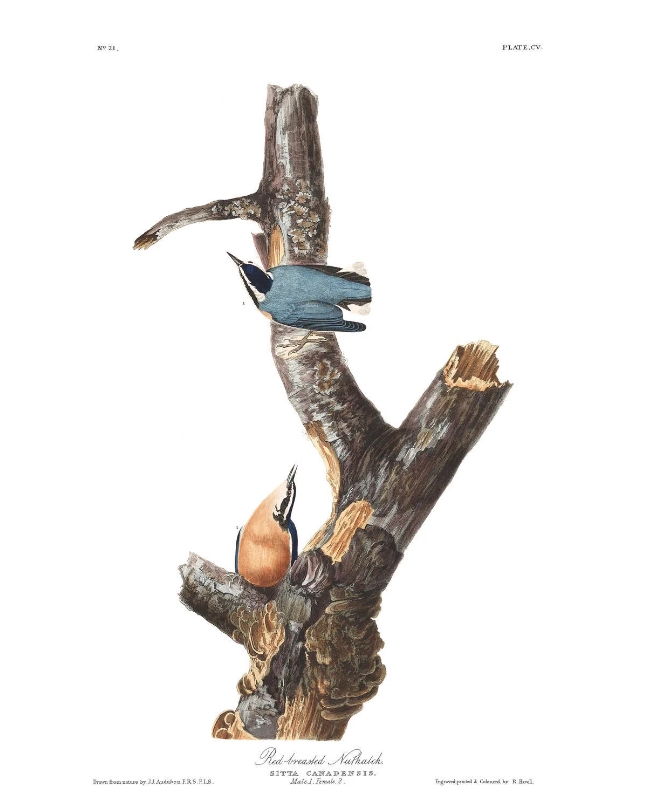 Red-breasted Nuthatch
Red-breasted Nuthatch
The Birds of America paintings by John James Audubon
Courtesy the John James Audubon Center at Mill Grove, Montgomery County Audubon Collection, and Zebra PublishingThe Bridgerland Audubon Society has enjoyed another productive Cache Valley Christmas Bird Count, and the participation of volunteers watching from home has proven as valuable as ever because despite the roving teams of volunteers covering the farms, wetlands, canyons, and mountains in the established 177 square mile count circle, the home sector sometimes contributes species missed by the driving and hiking teams. Either way, birds connect us because everyone who spent at least a few minutes counting birds was an important part of assisting the Audubon Society in generating community science data for the conservation of birds and the habitat they need.
The Audubon Society for the Protection of Birds was established in 1886 by George Bird Grinnell, who was inspired by the conservation ethic of his tutor and mentor, Lucy Bakewell Audubon, the widow of naturalist and artist John James Audubon. Grinnell published The Audubon Magazine, which “constituted one of the first efforts to preserve bird species decimated by the women’s hat trade, hunting, and loss of habitat.” (1) Many of the early members were women who, ironically, would attend society meetings wearing plumed hats.” (2) Grinnell is credited as the architect of the Migratory Bird Treaty Act, an effort which took over a decade of advocacy and the many voices of Audubon chapter members.
“The legacy of the Migratory Bird Treaty is the recognition that these magnificent birds are held in public trust and shared by all citizens. Our responsibility is to make sure that this legacy endures by conserving and managing migratory birds and their habitats for future generations to enjoy.” (3), and while the Migratory Bird Treaty Act is the cornerstone of migratory bird management across North America, anyone can help by participating in community science bird counts.
Highlights from this year’s Christmas Bird Count Home Sector reports include a few species not seen last year, such as Cedar Waxwing (Bombycilla cedrorum), which can be attracted to gardens with a songbird border of Juniper berries, Hawthorn, Serviceberry, and Red Osier Dogwood.
Also seen, the Ruby-crowned Kinglet (Corthylio calendula), one of North America’s smallest birds, which “can linger because in addition to insects, it will also eat berries and suet at feeders.”(4) The Red-breasted Nuthatch (Sitta canadensis) “feeds mainly on insects and spiders in summer; in winter, eats many seeds, especially those of conifers. Young are fed mostly or entirely on insects and spiders.” (5)
“Seed-eating boreal visitors, including several sparrow species and the Darkeyed Junco, will benefit from your letting things go literally to seed.” (6) The American and Lesser Goldfinch (Spinus tristis & Spinus psaltria) and the Pine Siskin (Spinus pinus) can be seen feasting on the tiny seeds in dried wild Sunflowers, Coneflowers, and Black-eyed Susans.
This year we added the elusive Cassiar (Junco hyemalis cismontanus), a Darkeyed Junco race also known as the Rocky Mountain Junco, which is rare to spot anywhere.(7) The Cassiar resembles a Slate Junco, but with a hood darker than it’s back. It is set apart from the more common Oregon, Slate, Pink-sided, and Gray-headed Juncos. This is an exciting addition to our local Christmas Bird Count checklist, and was made possible by someone watching the birds outside their window. To paraphrase Louis Pasteur who observed that in science chance favors the prepared mind, the more you know, the more you notice.
I’m Hilary Shughart with the Bridgerland Audubon Society, and I am wild about Utah!
Credits:
Images: Cassiar Junco, Courtesy & Copyright Hilary Shughart
Cedar Waxwing eating Juniper Berry Courtesy and Copyright Jimmie Grutzmacher, Photographer
Red-breasted Nuthatch: Courtesy of the John James Audubon Center at Mill Grove, Montgomery County Audubon Collection, and Zebra Publishing https://www.audubon.org/birds-of-america/red-breasted-nuthatch
Featured Audio: Courtesy & Copyright © Kevin Colver, https://wildstore.wildsanctuary.com/collections/special-collections/kevin-colver
Text & Voice: Hilary Shughart, President, https://bridgerlandaudubon.org/
Additional Reading: Hilary Shughart and Lyle Bingham, https://bridgerlandaudubon.org/
Additional Reading
- Spare the Birds! George Bird Grinnell and the First Audubon Society, by Carolyn Merchant, Yale University Press, 2016. https://yalebooks.yale.edu/book/9780300215458/spare-the-birds/
- B&C Member Spotlight – George Bird Grinnell, Boone and Crockett Club, https://www.boone-crockett.org/bc-member-spotlight-george-bird-grinnell
- The Migratory Bird Treaty Centennial, For 100 years, this landmark agreement has been the cornerstone of migratory bird management across North America. by Paul Schmidt. Ducks Unlimited, June 23, 2016, https://www.ducks.org/newsroom/the-migratory-bird-treaty-centennial
- Ruby-crowned Kinglet, American Bird Conservancy, https://abcbirds.org/bird/ruby-crowned-kinglet/
- Red-breasted Nuthatch (Sitta canadensis), National Audubon, https://www.audubon.org/field-guide/bird/red-breasted-nuthatch
- “ Even though records are widespread across much of the lower 48, only two of the grids show higher than the 0-2% frequency, the rarest category. They appear to not be common anywhere.”
Dark-eyed Junco races: Oregon, Slate-colored and Cassiar By eBird Northwest Team December 12, 2014 https://ebird.org/pnw/news/dark-eyed-junco-races-oregon-slate-colored-and-cassiar/ - How to Welcome Winter Birds: Fall may mean migration, but one bird’s north is just another bird’s south. By Ashley P. Taylor, National Audubon, October 06, 2015, https://www.audubon.org/news/how-welcome-winter-birds
Disponible en español - Dark-eyed Junco races: Oregon, Slate-colored and Cassiar By eBird Northwest Team December 12, 2014 https://ebird.org/pnw/news/dark-eyed-junco-races-oregon-slate-colored-and-cassiar/
Ordinary Extraordinary Junco, by Jonathan Atwell, Steve Burns, and Ellen Ketterson, 2013 Documentary Video https://juncoproject.org/view-download/chapter3/index.html
Wright, Rick, “The Junco Called Cassiar” (2013). Nebraska Bird Review. 1324. https://digitalcommons.unl.edu/nebbirdrev/1324
https://digitalcommons.unl.edu/cgi/viewcontent.cgi?article=2323&context=nebbirdrev




